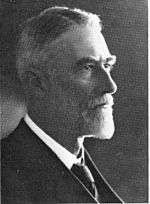South African Class 4 4-8-2
|
SAR Class 4 no. 1478 at Worcester, c. 1930 | |||||||||||||||||||||||||||||||||||||||||||||||||||||||||||||||||||||||||||||||||||||||||||||||||||||||||
| |||||||||||||||||||||||||||||||||||||||||||||||||||||||||||||||||||||||||||||||||||||||||||||||||||||||||
| |||||||||||||||||||||||||||||||||||||||||||||||||||||||||||||||||||||||||||||||||||||||||||||||||||||||||
| |||||||||||||||||||||||||||||||||||||||||||||||||||||||||||||||||||||||||||||||||||||||||||||||||||||||||
| |||||||||||||||||||||||||||||||||||||||||||||||||||||||||||||||||||||||||||||||||||||||||||||||||||||||||
| The leading coupled axle had flangeless wheels | |||||||||||||||||||||||||||||||||||||||||||||||||||||||||||||||||||||||||||||||||||||||||||||||||||||||||
The South African Railways Class 4 4-8-2 of 1911 was a steam locomotive from the pre-Union era in the Cape of Good Hope.
In 1911, the Cape Government Railways placed two steam locomotives with a 4-8-2 Mountain type wheel arrangement in service. A year later, when they were assimilated into the South African Railways, they were renumbered and classified as Class 4.[1][2][3][4]
Manufacturer
The first 4-8-2 Mountain type locomotive of the Cape Government Railways (CGR) was designed at the Salt River shops as a heavy mixed traffic engine by H.M. Beatty, the Chief Locomotive Superintendent of the CGR from 1896 to 1910. Two locomotives were built by the North British Locomotive Company (NBL) and delivered in March 1911. The locomotives were a further development of the two experimental locomotives which had been placed in service by the CGR in 1906, the CGR Class 9 2-8-2 (SAR Class Experimental 5) and the CGR Class 10 4-8-0 (SAR Class Experimental 6), both built by Kitson and Company.[1][4][5]
Characteristics

The Class 4 had 4 1⁄2 inches (114 millimetres) bar frames, Stephenson valve gear with flat "D" slide valves arranged above the cylinders, and used saturated steam. The boiler was equipped with a combustion chamber, which was carried forward 2 feet (610 millimetres) from the firebox into the boiler barrel, of which the diameter was increased at the hind course to suit. This reduced the distance between the tube plates to 18 feet (5,486 millimetres) and made them excellent steamers.[1][2][4]
While they were numbered 850 and 851 in the CGR numbering sequence, they were not designated a classification. The two engines were not identical, no. 850 being equipped with the usual Ramsbottom safety valves while no. 851 had Cole’s muffled type Pop safety valves, both set for 180 pounds per square inch (1,241 kilopascals) boiler pressure. They were delivered with Type XJ tenders with a 6 long tons 10 hundredweight (6.6 tonnes) coal and a 3,500 imperial gallons (15,900 litres) water capacity.[2][4][6][7]
South African Railways

When the Union of South Africa was established on 31 May 1910, the three Colonial government railways (CGR, Natal Government Railways and Central South African Railways) were united under a single administration to control and administer the railways, ports and harbours of the Union. Although the South African Railways and Harbours came into existence in 1910, with Sir William Hoy appointed as its first General Manager, the actual classification and renumbering of all the rolling stock of the three constituent railways required careful planning and was only implemented with effect from 1 January 1912.[3][8]
In 1912, these two locomotives were renumbered to 1477 and 1478 and classified as Class 4 on the SAR.[3][4][6]
Service
Both of them were placed in service in the Karoo, working between Touws River and Beaufort West. In later years they were stationed at Worcester, from where they were used extensively on and around the Cape Western system’s mainline, working pick-up goods trains to De Doorns in the Hex River valley and on the Mosselbaai line via Robertson.[1][4]
They were withdrawn from service by 1938.[4]
Illustration
The main picture shows SAR no. 1478 at Worcester, c. 1930, with Cole's Pop safety valves.
 GCR no. 850, SAR no. 1477, with Ramsbottom safety valves
GCR no. 850, SAR no. 1477, with Ramsbottom safety valves
References
- 1 2 3 4 Holland, D.F. (1972). Steam Locomotives of the South African Railways, Volume 2: 1910-1955 (1st ed.). Newton Abbott, Devon: David & Charles. pp. 12–13, 137. ISBN 978-0-7153-5427-8.
- 1 2 3 Espitalier, T.J.; Day, W.A.J. (1945). The Locomotive in South Africa - A Brief History of Railway Development. Chapter VII - South African Railways. South African Railways and Harbours Magazine, April 1945. p. 275.
- 1 2 3 Classification of S.A.R. Engines with Renumbering Lists, issued by the Chief Mechanical Engineer’s Office, Pretoria, January 1912, pp. 8, 12, 15, 46 (Reprinted in April 1987 by SATS Museum, R.3125-6/9/11-1000)
- 1 2 3 4 5 6 7 Paxton, Leith; Bourne, David (1985). Locomotives of the South African Railways (1st ed.). Cape Town: Struik. pp. 38–39. ISBN 0869772112.
- ↑ Durrant, A E (1989). Twilight of South African Steam (1st ed.). Newton Abbott, London: David & Charles. p. 13. ISBN 0715386387.
- 1 2 Holland, D.F. (1971). Steam Locomotives of the South African Railways, Volume 1: 1859-1910 (1st ed.). Newton Abbott, Devon: David & Charles. pp. 72–75. ISBN 978-0-7153-5382-0.
- ↑ North British Locomotive Company works list, compiled by Austrian locomotive historian Bernhard Schmeiser
- ↑ The South African Railways - Historical Survey. Editor George Hart, Publisher Bill Hart, Sponsored by Dorbyl Ltd., Published c. 1978, p. 25.
| Wikimedia Commons has media related to South African Class 4 (4-8-2). |
